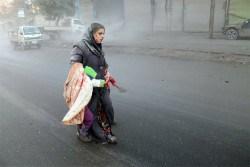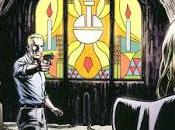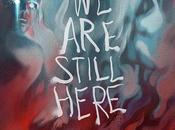Ultimi articoli
- Buon Natale a tutti. E una curiosità natalizia: il miliardo (quasi) di visite al video di Justin Bieber. 21 December 2013
- Contro la censura di Assad: la fotografia della donna di Aleppo che ha creato il caso. 21 December 2013
- Se Heidegger si confronta con Jünger 21 December 2013
 di Elie Chalala. Ogni volta che guardo immagini da Aleppo o sento che le periferie povere della città sono state nuovamente fatte bersaglio dalle bombe di Assad, mi ricordo dei “mumanah”, o dei proclami della sinistra sul loro primato nella difesa degli oppressi, dei miseri, degli studenti, dei lavoratori e dei contadini, i cui interessi il regime di Assad dice di avere a cuore. Badate però che non abbiamo sentito la parola “socialismo” pronunciata dal regime siriano negli ultimi tre anni, e che non ci aspettiamo di sentirla dalla dirigenza di Assad nel futuro prossimo. Sorprendentemente, sembrerebbe che più poveri siriani vengono uccisi dal regime di Assad in Aleppo e in altre città, più questi crimini esaltino gli spiriti dei “compagni”. Per quanto sia difficile crederlo, essi sembrano diventare quasi euforici davanti alla distruzioni fisiche e umane presentate come “vittorie”. Forse accade perché sentono che l’utopia socialista e egalitaria si realizzerà dopo che Assad avrà demolito ogni struttura in Siria, sia fisica che culturale, ricca o povera, dentro una sorta di ritorno ad uno stato di natura hobbesiano e di miseria condivisa. Lui potrà poi candidarsi per la rielezione nel 2014 e vincere come ha fatto sempre, con la differenza che questa volta vincerebbe con una percentuale del 60-70% secondo i giornali e le tv libanesi di sinistra.
di Elie Chalala. Ogni volta che guardo immagini da Aleppo o sento che le periferie povere della città sono state nuovamente fatte bersaglio dalle bombe di Assad, mi ricordo dei “mumanah”, o dei proclami della sinistra sul loro primato nella difesa degli oppressi, dei miseri, degli studenti, dei lavoratori e dei contadini, i cui interessi il regime di Assad dice di avere a cuore. Badate però che non abbiamo sentito la parola “socialismo” pronunciata dal regime siriano negli ultimi tre anni, e che non ci aspettiamo di sentirla dalla dirigenza di Assad nel futuro prossimo. Sorprendentemente, sembrerebbe che più poveri siriani vengono uccisi dal regime di Assad in Aleppo e in altre città, più questi crimini esaltino gli spiriti dei “compagni”. Per quanto sia difficile crederlo, essi sembrano diventare quasi euforici davanti alla distruzioni fisiche e umane presentate come “vittorie”. Forse accade perché sentono che l’utopia socialista e egalitaria si realizzerà dopo che Assad avrà demolito ogni struttura in Siria, sia fisica che culturale, ricca o povera, dentro una sorta di ritorno ad uno stato di natura hobbesiano e di miseria condivisa. Lui potrà poi candidarsi per la rielezione nel 2014 e vincere come ha fatto sempre, con la differenza che questa volta vincerebbe con una percentuale del 60-70% secondo i giornali e le tv libanesi di sinistra.
Permettetemi di tagliare corto con l’ipocrisia e le banalità di questi gruppi di “mumanah” libanesi che continuano a “visitare la Palestina” semplicimente per nascondere il loro codardo rifiuto di riconoscere il male dentro il loro stesso cortile – il regime di Assad.
Torniamo indietro al caso della fotografia della DONNA DI ALEPPO, di una donna che fortunamente sopravvisse ai bombardamenti del 15 dicembre nella parte nord di quella città(vedi foto). Dire che questa fotografia sia scioccante o straziante significherebbe sminuirla. Naturalmente non è la sola fotografia della distruzione che è piovuta dal cielo sui sobborghi poveri di Aleppo durante gli ultimi quattro giorni, ma la domanda rimane: quante fotografie si possono mostrare? I raid devastanti hanno causato 170 vittime in quattro giorni.
Tuttavia questa particolare immagine si impone nella coscienza di chi la guarda. Mostra, su uno sfondo di nuvole impolverate, una donna stremata accompagnata da due bambini mentre fuggono il pericolo e l’angoscia dei bombardamenti. C’è qualcosa di tremendamente intenso nella sua espressione. Dolore e shock segnano il suo animo, come hanno scritto alcuni giornali, ma uno si chiede se tale descrizione le renda piena giustizia. È affiancata dai suoi due bambini. Ne tiene uno sotto il braccio con la mano destra, mentre con la sinistra sostiene il secondo, aiutandolo a camminare e riuscendo a fare tutto questo senza trovare il tempo per pulirsi il viso dal sangue spillato sul suo volto. Ma le mie sono mere descrizioni. Le parole non riescono ad uguagliare la potenza dell’impatto visuale per dedurre una più profonda lettura di ciò che questa donna sfortunata pensava e sentiva durante la sua fuga. Si potrebbe azzardare che non è stata la prima volta in cui si è confrontata col pericolo, ma anche se lo fosse, l’angoscia e la paura si saranno accresciute mentre pensava al destino che potrebbe attendere lei e i suoi figli. Come si sarà sentita dopo avere probabilmente visto i suoi vicini morti o agonizzanti sotto i bombardamenti? Ci chiediamo: ci sono livelli, strati di fobia che si possono identificare e quantificare? Noi possiamo soltanto fare delle ipotesi. La risposta la lasciamo agli specialisti, agli psicologi che dovranno accertare l’impatto psicologico del genocidio perpetrato da Assad su una intera generazione di siriani.
Libera traduzione di Rina Brundu, in Dublin 21/12/2013.
————–
Original article.
THE PICTURE OF A WOMAN FROM ALEPPO!
Every time I watch the images from Aleppo or hear the news that the poor suburbs of the city have again been the targets for Assad’s bombs, I recall the mumanah or “leftist” diatribe of their championship of the downtrodden and the impoverished, the students, workers and peasants whose interests the Assad regime claims to have at heart. Never mind the fact that we haven’t heard the word “socialism” uttered by the Syrian regime for almost three years, and that we do not expect to hear it from the Assad junta in the foreseeable future. Astonishingly, it appears that the more of the Syrian poor the Assad regime kills in Aleppo and other towns the more these crimes uplift the spirits of the “comrades.” Hard as it is to believe, they seem to grow almost euphoric at the sight of human and physical utter destruction represented as “victories.” Perhaps they see the “socialist” and egalitarian utopia as being within reach after Assad has demolished every structure in Syria, both cultural and physical, leaving all, rich and poor, in a sort of Hobbesian state of nature – and shared misery. He could subsequently run for re-election in 2014 and win as he used to, with the exception that his projected win this time is by 60 or 70 percent according to Lebanese leftist newspapers and TV stations.
Allow me to break with the hypocrisy and the banality of those Lebanese mumanah groups who keep “visiting Palestine” simply in order to disguise their cowardly refusal to recognize the evil present in their own backyard – the Assad regime.
Let us return to the photograph of the WOMAN FROM ALEPPO, who fortunately survived the barrel bombing of the northern part of the city of Aleppo on December 15. (See picture below.) To call this picture shocking or heart-breaking would be an understatement. It is of course not the only picture of the destruction that rained from the sky onto Aleppo’s poor suburbs during the past four days, but the question always remains: how many pictures one can show? The devastating raids inflicted a total of more than 170 casualties within four days.
However this photograph lingers in the consciousness of the viewer. It displays, against a background of dust clouds, an exhausted woman accompanied by two children, fleeing the danger and distress of the bombing. There is something desperately poignant about her expression. Distress and shock mark her state of mind, as some newspapers wrote, but one wonders whether that does full justice to her mental state. She is flanked by her two children. She is holding one under his arm with her right hand, while with her left she supports the back of the second child, helping him to walk, managing all this without being able to wipe the blood spilled on her face. But these are mere descriptions. Words cannot match the power of the visual to elicit a deeper reading of what this unfortunate woman was thinking and feeling at the moment of her escape. One may speculate that her encounter with danger is not the first, and even if it is, her shock or fear could be multiplied as she considers what may still await her and her two children. How are her feelings affected by the probable likelihood that she saw her neighbors dead and dying under the barrel bomb raids? We wonder: are there levels and layers of fear that can be identified and quantified? One can only speculate. The answer will be left for the specialists, the psychologists, who may have to assess the psychological impact of Assad’s genocidal war on a generation of Syrians.
–Elie Chalala© Copyright 2013 AL JADID MAGAZINE
Featured image, (Photo Credit: AFB Photo/Mohammed al-Khatieb). Source www.aljadid.com
Tagged as: Al jadid, Aleppo, arab spring, assad, Attualità, crisi, Cultura, digital journalism, donna di aleppo, elie chalala, Giornalismo online, giornalista digitale, opinioni online, Rosebud - Giornalismo online, siria
Categorised in: Elie Chalala, Rosebud in English, Tutti gli articoli




